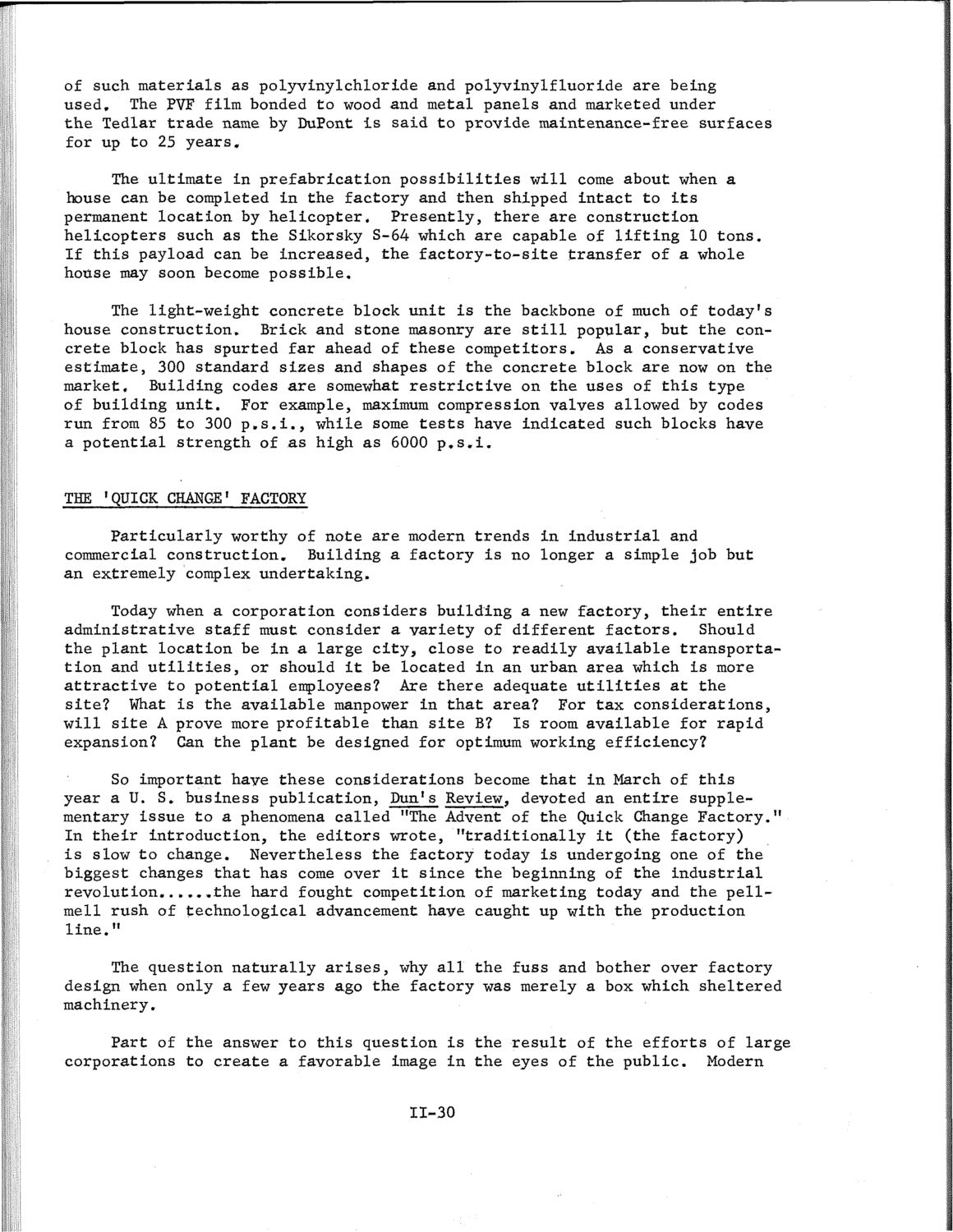| |
| |
Caption: SWE - Proceedings of the First International Conference of Women Engineers and Scientists
This is a reduced-resolution page image for fast online browsing.

EXTRACTED TEXT FROM PAGE:
of such materials as polyvinylchloride and polyvinylfluoride are being used. The PVF film bonded to wood and metal panels and marketed under the Tedlar trade name by DuPont is said to provide maintenance-free surfaces for up to 25 years. The ultimate in prefabrication possibilities will come about when a house can be completed in the factory and then shipped intact to its permanent location by helicopter. Presently, there are construction helicopters such as the Sikorsky S-64 which are capable of lifting 10 tons. If this payload can be increased, the factory-to-site transfer of a whole house may soon become possible. The light-weight concrete block unit is the backbone of much of today's house construction. Brick and stone masonry are still popular, but the concrete block has spurted far ahead of these competitors. As a conservative estimate, 300 standard sizes and shapes of the concrete block are now on the market. Building codes are somewhat restrictive on the uses of this type of building unit. For example, maximum compression valves allowed by codes run from 85 to 300 p.s.i., while some tests have indicated such blocks have a potential strength of as high as 6000 p,s.i. THE 'QUICK CHANGE1 FACTORY Particularly worthy of note are modern trends in industrial and commercial construction. Building a factory is no longer a simple job but an extremely complex undertaking. Today when a corporation considers building a new factory, their entire administrative staff must consider a variety of different factors. Should the plant location be in a large city, close to readily available transportation and utilities, or should it be located in an urban area which is more attractive to potential employees? Are there adequate utilities at the site? What is the available manpower in that area? For tax considerations, will site A prove more profitable than site B? Is room available for rapid expansion? Can the plant be designed for optimum working efficiency? So important have these considerations become that in March of this year a U. S. business publication, Dun's Review, devoted an entire supplementary issue to a phenomena called "The Advent of the Quick Change Factory." In their introduction, the editors wrote, "traditionally it (the factory) is slow to change. Nevertheless the factory today is undergoing one of the biggest changes that has come over it since the beginning of the industrial revolution the hard fought competition of marketing today and the pellmell rush of technological advancement have caught up with the production line." The question naturally arises, why all the fuss and bother over factory design when only a few years ago the factory was merely a box which sheltered machinery. Part of the answer to this question is the result of the efforts of large corporations to create a favorable image in the eyes of the public. Modern 11-30
| |